Lonicera henryi
HONEYSUCKLE, WOODBINE
Family: Caprifoliaceae
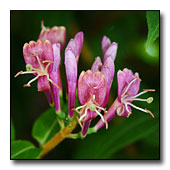
Quick Jumps
Growing Guide
Rainy Side Notes
GROWING GUIDE
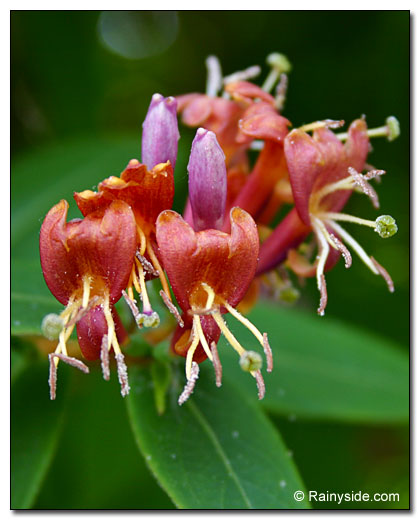
Origin:
Western China.
Plant Group:
Twining climber.
Hardiness:
Sunset zones: 2b-9, 14-21.
USDA zones: 3-8.
Heat zones: 8-1.
Mature size:
Height: 10-30 feet (3.5-10 m).
Flowering period:
Early to midsummer.
Flowering attributes:
Flowers are ¾-inch long with yellow throats in shades of pink, orange and maroon, followed by dark blue fruits.
Leaf attributes:
Evergreen to semi-evergreen, glossy, oblong, pointed leaves.
Growth habit:
Twining climber.
Light:
Full sun to partial shade.
Soil:
Fertile, humus rich, well-drained soil. Additional watering is needed during our Northwest drought season.
Feeding:
Apply complete organic fertilizer in spring.
Propagation Methods:
Sow seed as soon as ripe and place in cold frame.
Semi-ripe cuttings in summer.
Hardwood cuttings in late summer.
Layer in August.
Pruning Methods:
Thin yearly and prune immediately after flowering. Cut old honeysuckles to within a foot of the ground to rejuvenate.
Rainy Side Notes
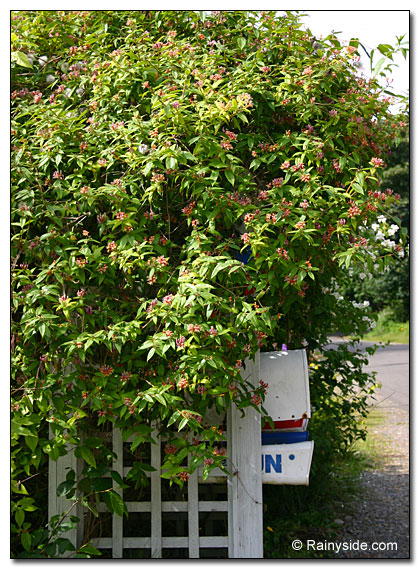
Lonicera henryi's flowers may be smaller than most honeysuckle vines, but their charming blossoms fill the vine with abundance. Hummingbirds frequently visit and later, when the blue berries ripen, other birds feast on the fruit. At first, I was disappointed with this honeysuckle with no fragrance, but I do like its evergreen presence year round. I'm growing fond of the tiny flowers after realizing they are better viewed close up.
Our mail is delivered to a mailbox nestled in a vine-covered arbor, which I built to get rid of three ugly mailboxes on rotting posts leaning in all directions. When the honeysuckle is in bloom, it's a pleasure to walk by and view the flowers buzzed by the bees and hummingbirds. The exuberant evergreen vine smothers the structure until you barely see it. This honeysuckle is a reliable choice for covering ugly structures or hiding wire fences, and it performs splendidly as a ground cover.
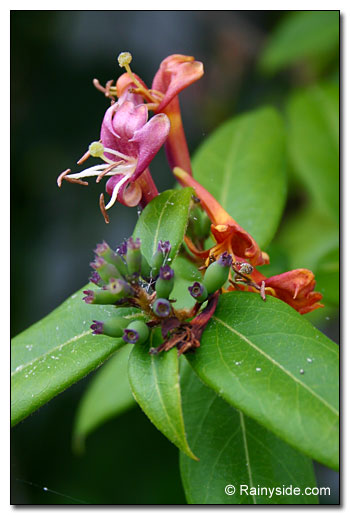
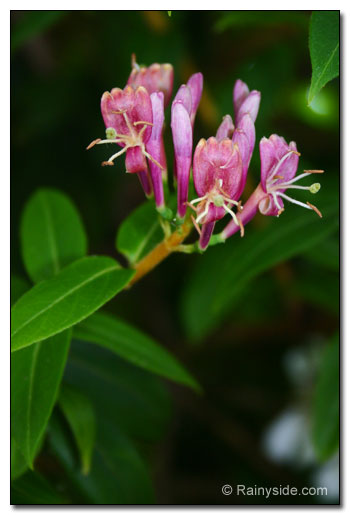
Photographed in author's garden.

Gardening for the Homebrewer: Grow and Process Plants for Making Beer, Wine, Gruit, Cider, Perry, and More
By co-authors Debbie Teashon (Rainy Side Gardeners) and Wendy Tweton
Copyright Notice | Home | Search | Vines

